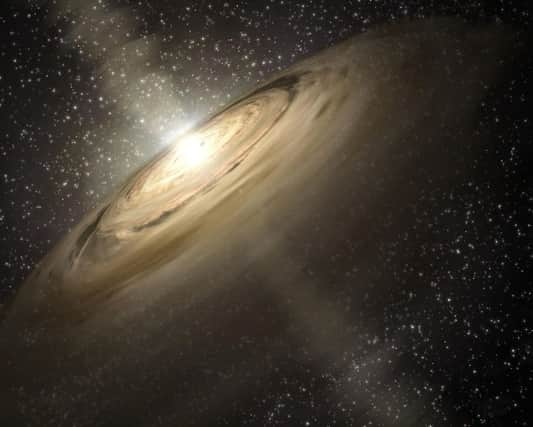Earth-like building blocks are everywhere, say scientists


Rocky planets are three times more likely to possess the same types of minerals that have constructed the Earth than astronomers previously thought, the research shows.
The discovery further increases the chances of finding Earth-like life beyond the solar system.
Advertisement
Hide AdAdvertisement
Hide AdMinerals containing carbon, oxygen, magnesium, and silicon are believed to shape the landscapes of rocky planets forming around sun-like stars.
Subtle differences can have a big impact on plate tectonics, heating and cooling, all of which affect a planet’s potential habitability.
Earlier observations had indicated that rocky planets fell into three distinct groups - those with a similar set of mineral building blocks as the Earth, those much richer in carbon, and those with significantly more silicon than magnesium.
Lead researcher Professor Brad Gibson, from the University of Hull, said: “The ratio of elements on Earth has led to the chemical conditions ‘just right’ for life.
Advertisement
Hide AdAdvertisement
Hide Ad“Too much magnesium or too little silicon and your planet ends up having the wrong balance between minerals to form the type of rocks that make up the Earth’s crust. Too much carbon and your rocky planet might turn out to be more like the graphite in your pencil than the surface of a planet like the Earth.”
The scientists were surprised by their results after running a sophisticated computer simulation of the chemical evolution of the Milky Way to study the formation of planets.
“At first, I thought we’d got the model wrong,” said Prof Gibson. “As an overall representation of the Milky Way, everything was pretty much perfect. Everything was in the right place; the rates of stars forming and stars dying, individual elements and isotopes all matched observations of what the Milky Way is really like.
“But when we looked at planetary formation, every solar system we looked at had the same elemental building blocks as Earth, and not just one in three. We couldn’t find a fault with the model, so we went back and checked the observations. There we found some uncertainties that were causing the one-in-three result.
Advertisement
Hide AdAdvertisement
Hide Ad“Removing these, observations agreed with our predictions that the same elemental building blocks are found in every exoplanet system, wherever it is in the galaxy.”
Previously, scientists trying to work out the chemical make-up of planetary systems had tended to focus on large planets orbiting very bright stars, he said. This could lead to uncertainties of 10% or 20%.
In addition, historically the spectra - light wave lengths associated with chemical composition - of oxygen and nickel had been hard to differentiate.
Prof Gibson, who presented the research at the Royal Astronomical Society’s National Astronomy Meeting in Llandudno, Wales, added: “Even with the right chemical building blocks, not every planet will be just like Earth, and conditions allowing for liquid water to exist on the surface are needed for habitability.
Advertisement
Hide AdAdvertisement
Hide Ad“We only need to look to Mars and Venus to see how differently terrestrial planets can evolve. However, if the building blocks are there, then it’s more likely that you will get Earth-like planets - and three times more likely than we’d previously thought.”